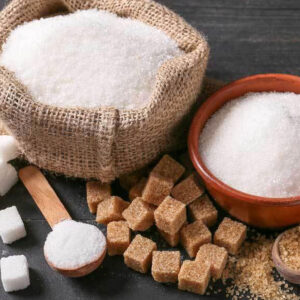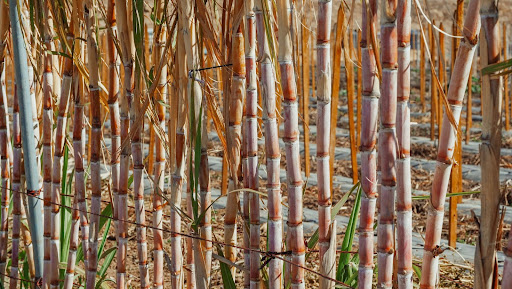Discover the Uses and Benefits of Beet Sugar Vs Cane Sugar in Your Daily Diet
Checking out the unique top qualities of beet and cane sugar reveals greater than just their sweetening abilities; it highlights their one-of-a-kind effect on health and culinary arts. Beet sugar, understood for its subtle taste, is typically preferred in delicate desserts, whereas cane sugar, with its tip of molasses, adds richness to durable recipes. Each type holds its very own dietary profile and glycemic ramifications, inviting a much deeper understanding of their functions in a well balanced diet and lasting consumption techniques.
Beginning and Manufacturing Processes of Beet and Cane Sugar

The distinct environments and soil kinds required for expanding sugar beetroots and sugarcane contribute to distinctions in their growing practices and geographic circulation, influencing the business economics and sustainability of their manufacturing. beet sugar vs cane sugar.
Nutritional Comparison In Between Beet Sugar and Cane Sugar
In spite of originating from various plants, beet sugar and cane sugar are nutritionally extremely similar, both primarily being composed of sucrose. Each offers regarding 4 calories per gram, translating to roughly 16 calories per tsp. Structurally, both sugars are made up of about 99.95% sucrose, with very little amounts of various other compounds like dampness and trace element, which do not substantially change their nutritional accounts.

Inevitably, when choosing between beet sugar and cane sugar based on dietary web content alone, both deal similar benefits and disadvantages as they are essentially types of the exact same particle-- sucrose, offering quick energy without various other nutrients.
Effect On Health: Glycemic Index and Caloric Content
Exploring even more into the impacts of beet sugar and cane sugar on health and wellness, it is necessary to consider their glycemic index and calorie content. Both sugars are classified as sucrose, which includes glucose and fructose. This composition leads them to have a similar influence on blood glucose degrees. The glycemic index (GI) of both beet and cane sugar is around 65, classifying them as high-GI foods, which can create quick spikes in blood sugar levels. This is a crucial element for visit the website people handling diabetes or those attempting to support their power degrees throughout the day.
Each sort of sugar has about 4 calories per gram, making their calorie web content equivalent. For those keeping an eye on caloric intake, specifically when taking care of weight or metabolic wellness conditions, understanding this equivalence is vital (beet sugar vs cane sugar). Too much consumption of any type of high-calorie, high-GI food can contribute to health concerns such as excessive weight, heart condition, and insulin resistance.
Environmental and Economic Considerations of Sugar Manufacturing
Beyond health influences, the production of beet and cane sugar additionally Website increases substantial environmental and financial worries. Sugar beet cultivation tends to need cooler climates and has a reduced geographical impact compared to sugar cane, which grows in exotic regions. Both crops are extensive in terms of water usage and land profession, potentially leading to logging and water shortage. Economically, the global sugar market is very unpredictable, influenced by changes in international trade policies and subsidies. Lots of nations incentivize sugar manufacturing through monetary assistance, skewing market value and impacting small farmers adversely.
Additionally, the use of chemicals and plant foods in both beet and cane sugar cultivation can cause dirt destruction and air pollution, further influencing biodiversity and local water bodies (beet sugar vs cane sugar). The selection between cultivating sugar beet or cane usually depends upon local ecological conditions and financial factors, making the sustainability of sugar manufacturing an intricate problem
Culinary Applications and Taste Distinctions
While the environmental and financial facets of sugar production are undoubtedly considerable, the choice between beet and cane sugar likewise influences cooking applications and flavor accounts. Beet sugar, derived from the sugar beet plant, is known for its remarkably neutral taste.
Walking cane sugar, drawn out from sugarcane, typically retains molasses traces, which present an unique richness and depth. This mild molasses flavor boosts the complexity of baked items, you can try here sauces, and sauces. It is especially preferred in products where a sugar touch is wanted, such as in brownies or gingerbread. In addition, the minor variation in dampness material between beet and cane sugar can influence the structure and consistency of dishes, making cane sugar a recommended option for particular dishes that benefit from its distinct residential or commercial properties.

Conclusion
In final thought, both beet and cane sugar have distinct origins and manufacturing processes, offering comparable nutritional accounts with mild differences in salt material and taste. While their effect on wellness, especially concerning glycemic index and calories, is similar, the option in between them commonly boils down to ecological, financial elements, and certain cooking demands. Understanding these aspects can assist customers in making notified choices that line up with their wellness goals and taste choices.
Comments on “The debate on beet sugar vs cane sugar often is about manufacturing processes and composition.”